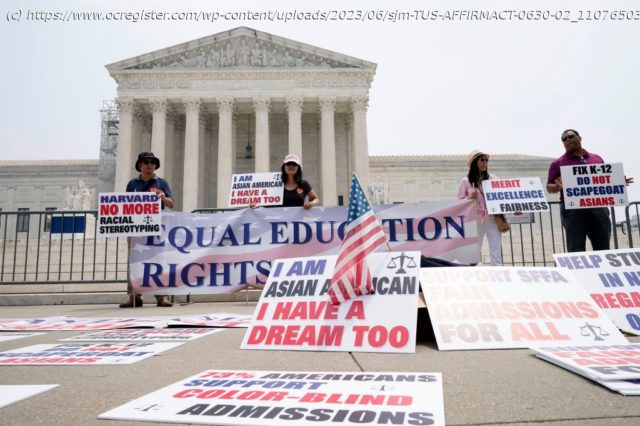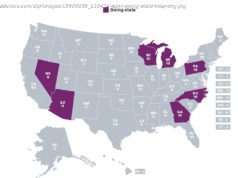Facing a conservative Supreme Court that appeared skeptical from the start, colleges have been preparing for a rollback. Some were considering adding more essays to get a better picture of an appli…
The Supreme Court has sent shockwaves through higher education with a landmark decision that struck down affirmative action and left colleges across the nation searching for new ways to promote student diversity.
Leaders of scores of universities said Thursday that they were disappointed by what they see as a blow to diversity. Yet many also voiced optimism that they would find new ways to admit more Black and Hispanic students, despite evidence that eliminating the practice often leads to steep enrollment decreases among them.
President Joe Biden said he disagreed with the decision and asked the Education Department to explore policies that could help colleges build diverse student bodies. He also pushed against policies like legacy preferences — admissions boosts given to the children of alumni — that tend to help white, wealthy students.
“We should never allow the country to walk away from the dream upon which it was founded,” Biden told reporters. “We need a new path forward, a path consistent with the law that protects diversity and expands opportunity.”
Yet evidence from states that previously outlawed affirmative action show it will be a daunting challenge.
As an alternative to affirmative action, colleges from California to Florida have tried a range of strategies to achieve the diversity they say is essential to their campuses. Many have given greater preference to low-income families. Others started admitting top students from every community in their state.
But years of experimentation — often prompted by state-level bans on considering race in admissions — left no clear solution. In states requiring race-neutral policies, many colleges saw enrollment drops among Black and Hispanic students, especially at selective colleges that historically have been mostly white.
At Amherst College, officials had estimated going entirely race-neutral would reduce Black, Hispanic and Indigenous populations by half.
“We fully expect it would be a significant decrease in our population,” said Matthew McGann, Amherst’s director of admission, earlier this year.
Facing a conservative Supreme Court that appeared skeptical from the start, colleges have been preparing for a rollback. Some were considering adding more essays to get a better picture of an applicant’s background, a strategy invited in Thursday’s Supreme Court ruling.
“Nothing prohibits universities from considering an applicant’s discussion of how race affected the applicant’s life, so long as that discussion is concretely tied to a quality of character or unique ability that the particular applicant can contribute to the university,” Chief Justice John Roberts wrote for the court’s conservative majority.






